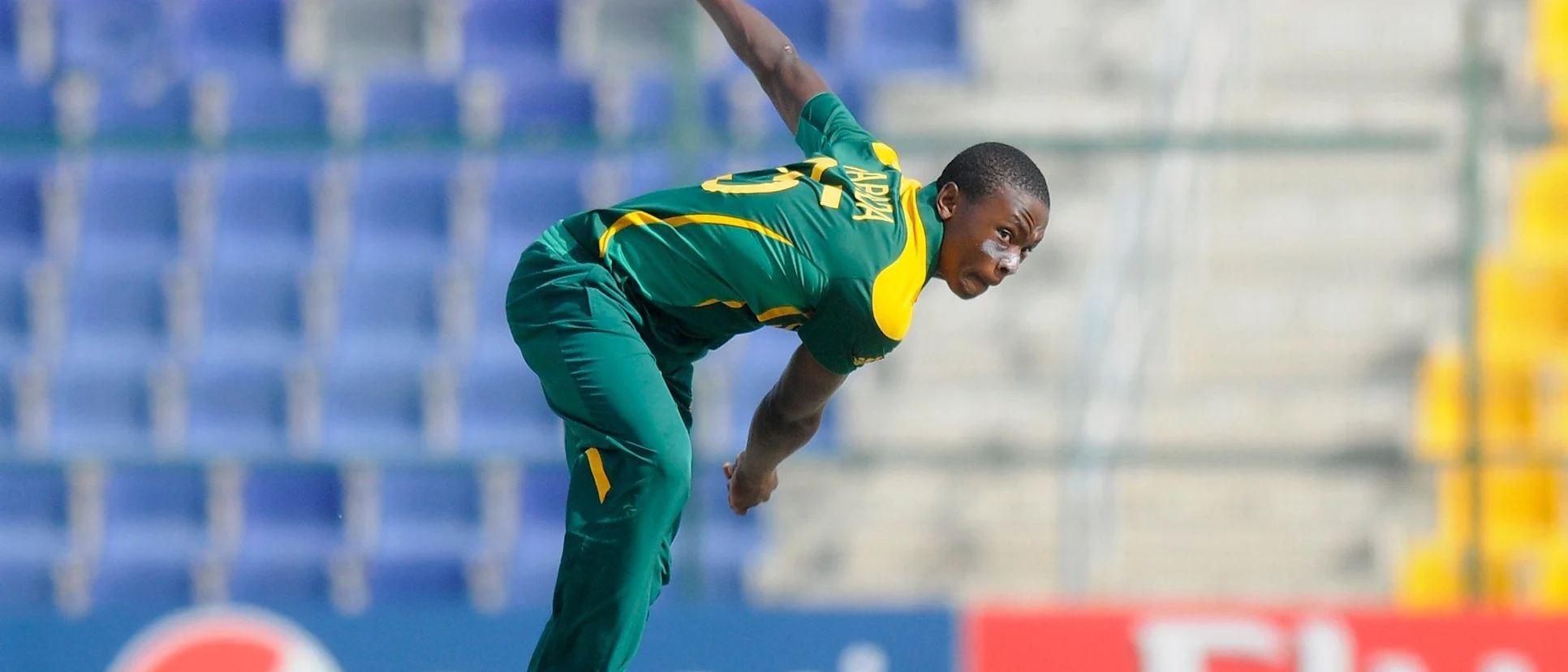Kagiso Rabada, from Under-19 promise to international star

Kagiso Rabada’s emergence coincides with a period in international cricket where fast bowling is undergoing a makeover. Mitchell Johnson retired recently, and Dale Steyn, Morne Morkel and James Anderson are all on the wrong side of 30. While Trent Boult and Mitchell Starc had been earmarked to carry the baton forward, Rabada’s rise has ensured that there will be a heavy dash of South African spice in the coming decade.
The ability to generate good speed on a consistent basis is the most noticeable thing about Rabada’s bowling, but that is only a part of the entire package. His natural athleticism, rhythmic run-up and smooth action have already earned him comparisons with Michael Holding. His control over the ball, the intelligence to adapt to conditions and an impressive strike-rate make him an exciting prospect.
That entire gamut was on display in South Africa’s first One-Day International against India in Kanpur in October 2015. The manner in which he bowled back of the length deliveries and cramped Mahendra Singh Dhoni – one of the best finishers in the modern era – to successfully defend 10 runs in the final over was a refreshing sight. He finished with two wickets in that over, as South Africa prevailed by five runs.

The most revealing part of that over was how a clear-headed 20-year-old remained unaffected by the pressure, and grasped the message of AB de Villiers, his captain, as the duo strategised and executed the plan smartly on a ball-by-ball basis.
“I was speaking to AB at the time, and I said, listen we have been bowling back of a length, that’s been the plan. What do you think about yorkers? He said no, because MS can pounce on those full balls,” said Rabada, revealing the details of the conversation, after the match. “The plan was great. That’s why the over turned out to be what it was.”
Rabada came to India on the back of a sensational ODI debut in Bangladesh where he became the first debutant to take a hat-trick, and finished with figures of 6 for 16 – the best-ever returns by a debutant. That successful over in Kanpur, which set the tone for South Africa’s first-ever ODI series in in India, only propelled his status as a rising star further.
His good show in Bangladesh and India, two countries where pace bowlers have not had been historically successful, indicates Rabada’s effective understanding of the dynamics of bowling. His maturity at such an early stage of his career can only augur well for South African cricket, but for those who followed his exploits at the ICC Under-19 World Cup 2014 it was not a surprise.

That Rabada played in the tournament was partly because of Craig Kirsten’s injury before a preparatory series against England at home. If the rise from the fringes to become the team’s best bowler was not enough to testify to Rabada’s character, his performance in the semi-final against Australia sealed the verdict.
After South Africa posted 230 on a pitch that had slowed down considerably, Rabada bent his back and bowled in a tight channel to peg the batsmen on to the backfoot. His technique fetched him figures of 6 for 25, and he walked away with the Man of the Match award.
When asked about the genesis of his spell, Rabada, always polite and humble in his demeanour, kept it simple: “Like any opening bowler, the plan was to bowl in the right line and length, and bowl the odd bouncer. Just try and stay as disciplined as possible and the wickets will come.”
Prior to that semi-final, in the opening game against the West Indies, Rabada had made the conditions redundant to finish with an analysis of 8-3-14-3 as South Africa successfully defended 198 and got its campaign rolling.
Watching that spell from the press box of the Dubai International Cricket Stadium, Wasim Akram immediately predicted a bright future for the Johannesburg lad. After the game, Ray Jennings, South Africa’s coach, spoke glowingly of his strike bowler’s disciplined work ethic and hunger.

Rabada lived up to his reputation as he ended as the tournament’s second best bowler with 14 scalps at 10.28 and helped South Africa win its first-ever World Cup at any level. Since then he has also gone on to record the best match figures in the history of South African first-class cricket since the start of the franchise era when he finished with 14 for 105 for Lions against Dolphins, surpassing Steyn’s 14 for 110 in 2007.
While all these performances have earned him due attention, there was one moment during the World Cup warm-up game against India, the previous defending champions, that made Rabada a player to look out for.
Bowling at the International Cricket Council’s Academy Ground in Dubai, he got a slightly shortish delivery to jag back in and hit the thumb of Akhil Herwadkar, the opener. The sound made by the impact was so clear in the press box that a few journalists covering the match looked up to make a note of the bowler’s name.
Things have moved at a rapid pace since then, and a hectic cricket schedule has meant that Rabada has given up the aspirations to study law. He has shifted his focus towards pursuing a degree in management studies, and creating music in his free time.
Rabada is another example of how significant U-19 World Cup is in the scheme of a youngster’s development, and his success will be an inspiration for the players participating in the 2016 edition in Bangladesh.